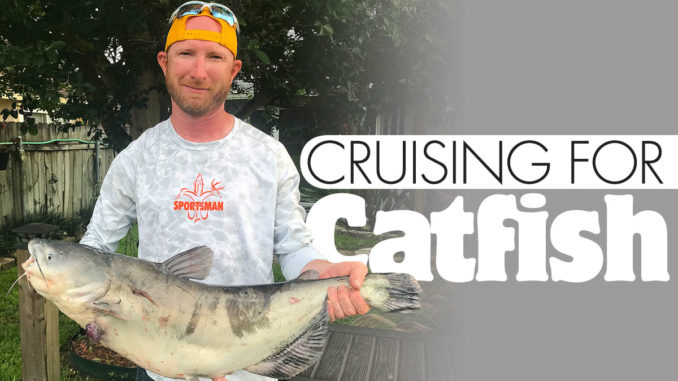
Catch a cooler full of delicious catfish using this easy and incredibly relaxing jugline technique
When Jeff Caldwell’s friends pressed him to get his new boat on the water, he thought about different types of fishing he’d like to use it for. He came up with an unconventional — but highly effective and relaxing — method of catching catfish.
Caldwell decided he would use his boat to jug-line for catfish. He and his friends have had a blast ever since. And they’ve eaten plenty of catfish nuggets in the process.
Jug-lining isn’t a new form of fishing, but newer materials have made it easier and more effective. Like many anglers, Caldwell and his friends build their own jugs.
DIY jugs
Caldwell starts with a 10-foot section of PVC pipe that’s skinny enough to slide into the hollowed part of a foam pool noodle. He cuts it into eight sections each 15 inches long.
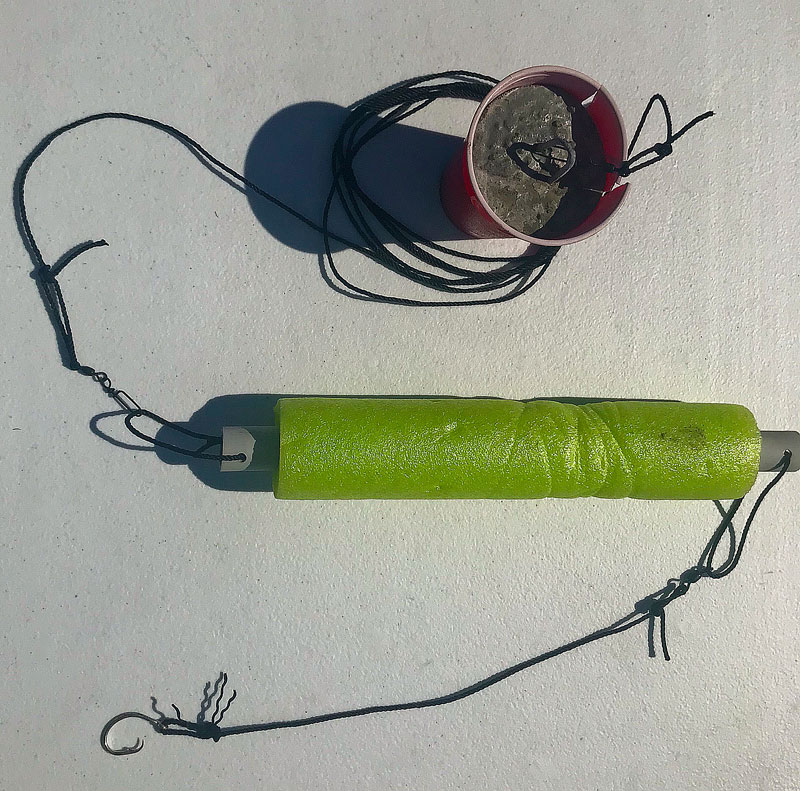
He roughs up a 12-inch section of the PVC pipe, applies glue to it, then adds the pool noodle to the glued area. Next, he drills a hole through both ends of the PVC. Then, he slides a short section of size 48 tarred and twisted nylon twine from Catahoula Manufacturing through one hole, and he ties a square knot inside the PVC. This forms a loop at one end of the pipe.
On the other end of the pipe, he slides the twine through a 2/0 barrel swivel before forming the square knot inside the PVC.
Now, he takes a 12-foot section of the same twine and ties it to a 150-pound test snap swivel. He snaps that swivel onto the PVC’s loop that does not have the barrel swivel attached. This 12-foot section is finished off with a weight he makes using a 16-ounce Solo cup, concrete mix and a heavy-duty metal eyelet he makes from discarded political sign stands.
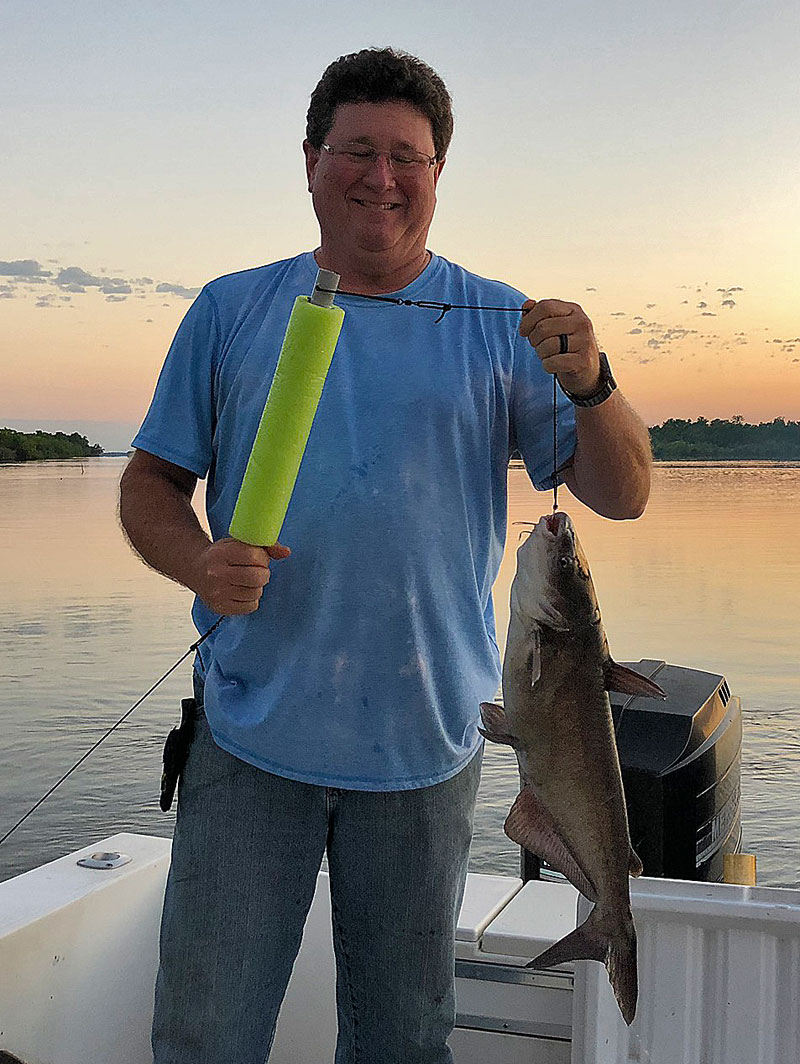
On the opposite end of the jug, a 2-foot leader of the same twine is tied onto the ball bearing swivel. Then, a 12/0 Mustad circle hook is tied to the other end of that leader. With the weight tied to one end of the jug on a 12-foot leader and the hook tied to the other on a 2-foot leader, the jug stays in place, while allowing the bait to move about relatively freely with the current and wind. It also allows a fish to move away with the bait and hook itself before feeling any resistance.
Best bait
Caldwell said the most effective bait has been small sections of pork butt soaked in Italian dressing. The catfish like them, and they stay on the hook better than commercially-made stinkbaits.
Once on the water, the boat operator watches the display of the boat’s electronics. He’s mainly looking for sloping areas that offer catfish easy access to both deep and shallow water. When he sees a good spot, he tells the others to toss out a jug line, then he marks it on the boat’s GPS.
“Marking it on the GPS gives us a good reference point. Sometimes a good fish will move the jug away, but having that initial reference spot makes it fairly easy to find,” Caldwell said.
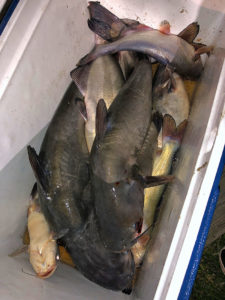
Check-in time
On their first night of fishing, they dropped the “jugs” off just before nightfall, then went back to check them at daybreak the next morning. He said that was a mistake.
“It was difficult to find them. That allows any hooked fish too much time to move the jugs away,” he said.
“Now we start in the evenings between 5 and 7 p.m. We drop 24 jugs off. Once we put the last one in the water, we may eat a snack or ride around a few minutes, and then we start checking them,” he said.
Having handheld lights helps once the sun goes down, and Caldwell said he plans to add reflective tape to the weighted ends of all his jugs to make finding them in the dark even easier.
“That will also help us always grab the weighted side of the jug. And that makes it more difficult for the fish to get away when we are lifting the jugs,” he said.
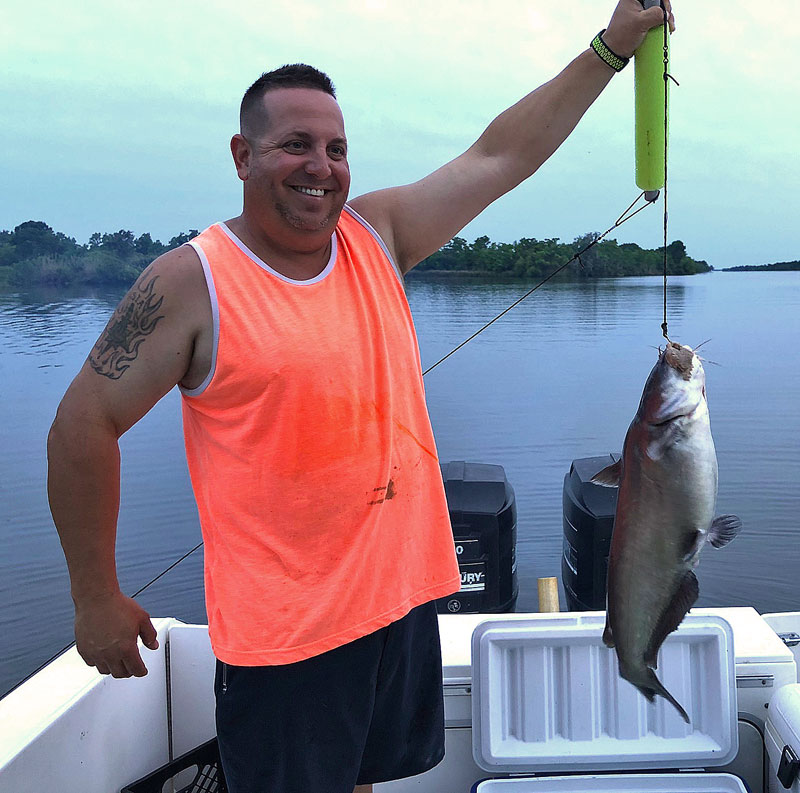
Watch out for gators
They once had to rescue one of their hooked fish from a gator, so he suggests pulling the jugs up with a boat hook. And they’ve had some jugs damaged by gators, which seem curious enough about the floating objects to sink their teeth into.
But one thing they’ve never done while jug fishing is left the water without enough catfish to make the trip worthwhile.
“It’s a very relaxing way to fish,” he said. “You aren’t constantly casting and reeling or watching a bobber the whole time.
“Once the jugs are in the water, you can ride around and sight-see, watch the birds, eat a snack, have a conversation, and simply enjoy spending time with friends in a relaxing way. It’s fun to check the lines and see what you’ve caught too, and when the night is over, we’ve always got plenty of fish.”

